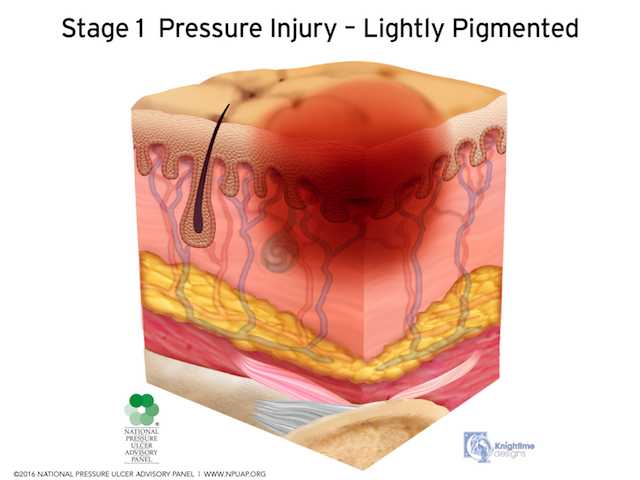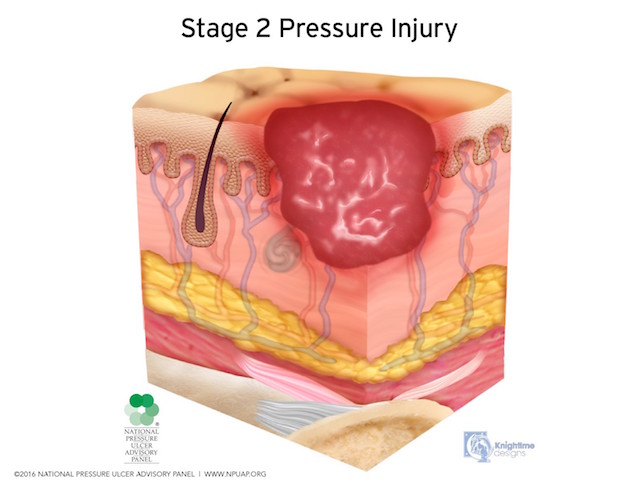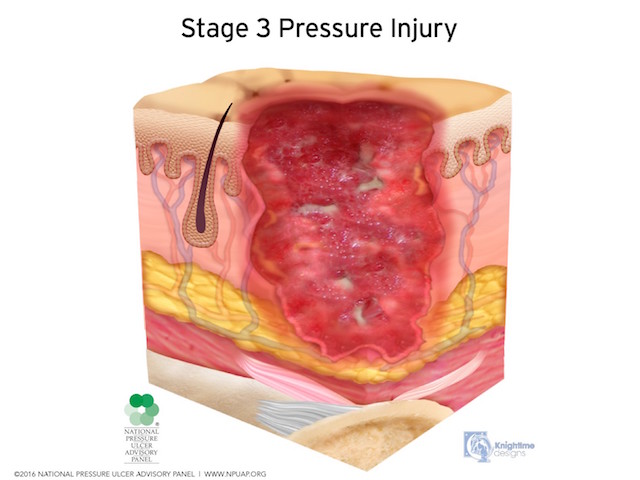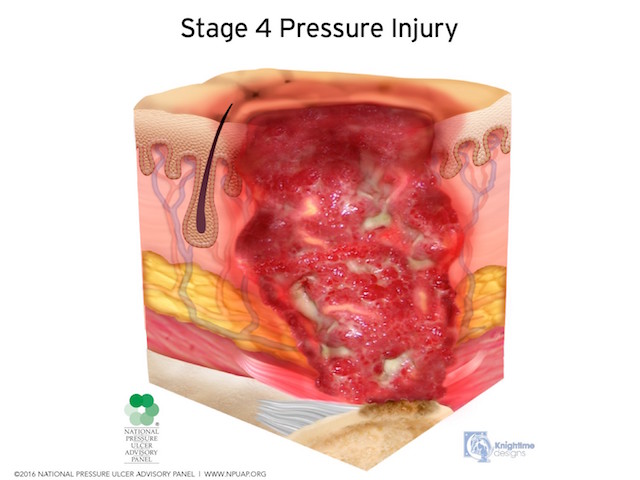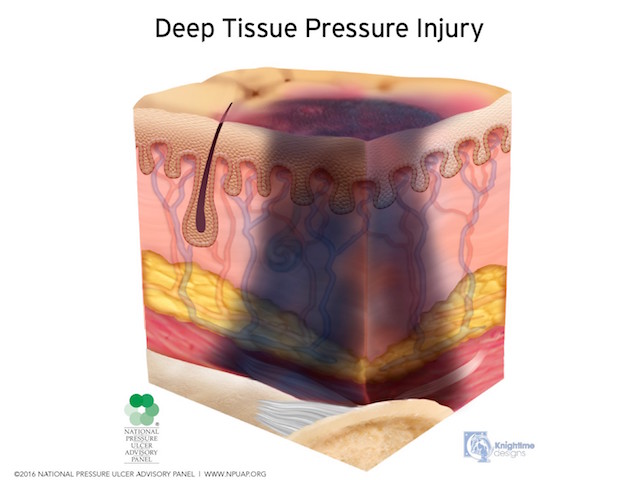-
References
Consortium for spinal cord medicine. Pressure Ulcers Prevention and Treatment following Injury. A Clinical Practice Guideline for Health Care Professionals, Paralyzed Veterans of America 2014;Second Edition:2.
Gray M, et al. NPUAP Pressure Injury Stages. National Pressure Ulcer Advisory Panel 2016.
Kruger E, Pires M, Ngann Y, Sterling M, Rubayi S. Comprehensive management of pressureulcers in spinal cord injury: Current concepts and future trends. The Journal of Spinal Cord Medicine 2013;36(6).
